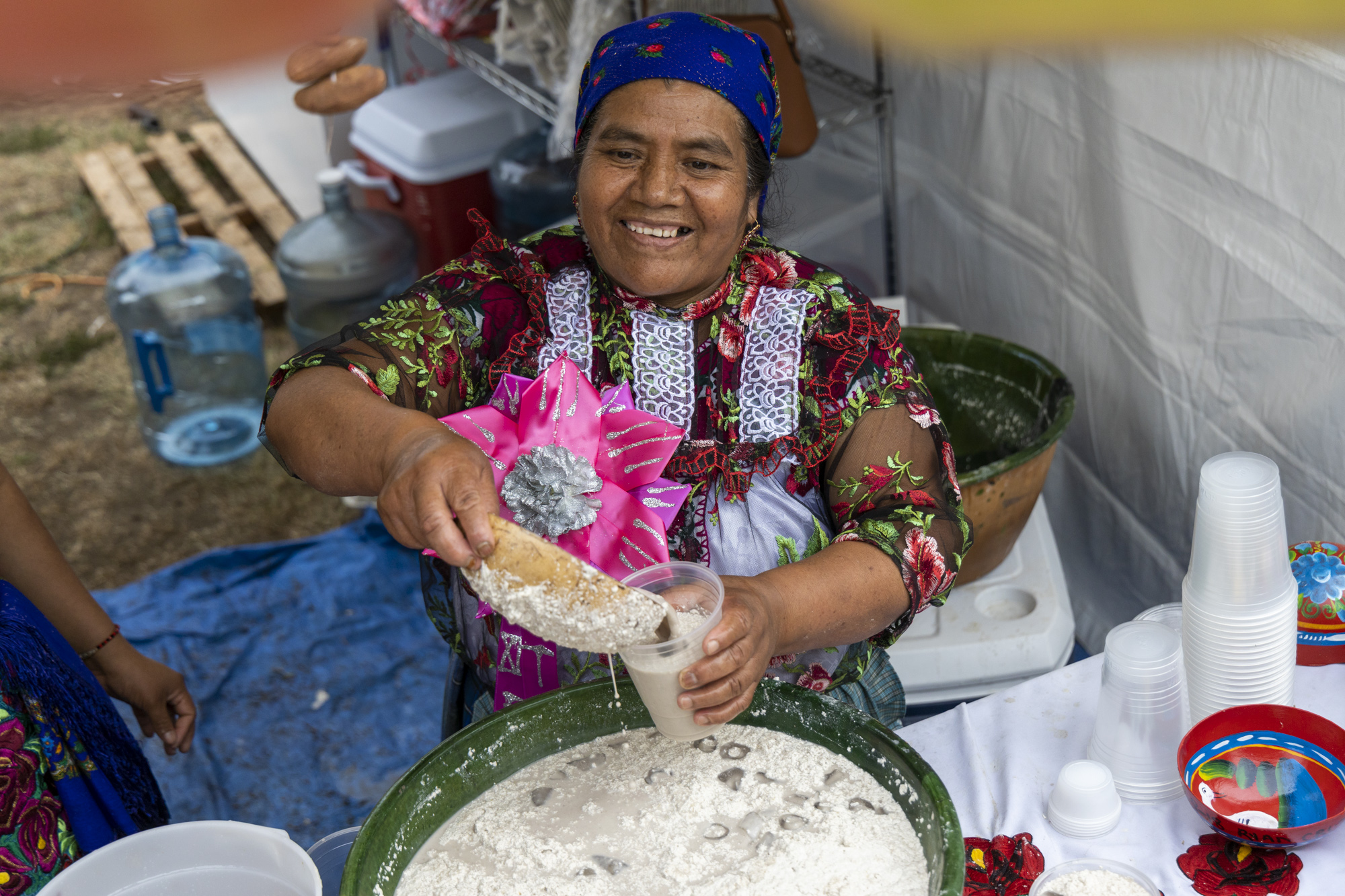[dropcap size=big]T[/dropcap]ejate is a pre-Hispanic Oaxacan drink known as “the drink of the gods” that upon the first sip, requires you to stop and reflect on its floral, chocolaty flavor that has been enjoyed for hundreds of years.
Due to the labor and region-specific ingredients needed to make this nectar, it is nearly impossible to find this unique beverage outside of Oaxaca. Which made the 12th Annual Feria de Tejate that took place in West L.A.’s Stoner Park near Sawtelle over the holiday weekend all the more special.
There were marmotas—traditional ornate Oaxacan balloon-like spheres used in celebrations—with phrases like, “Dios nunca muere” (God never dies) and others in Zapoteco, one of the indigenous languages spoken in Oaxaca. “Guish-bac, pueblo del cielo” was on one sign, Guisha Bac being the Zapotec word for Tlacolula, which means Pueblo Del Cielo. They all adorned the sky as men danced with the balancing act that is keeping these heavy large spheres of cloth and wood upright.
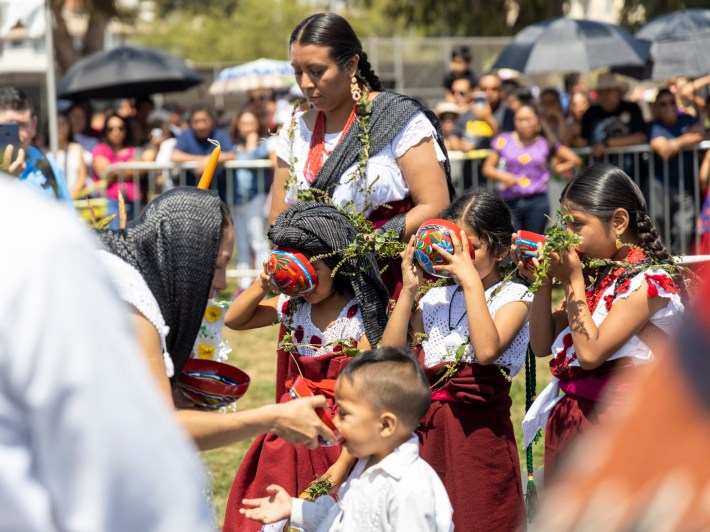
There is a term for this Oaxacan culture in Los Angeles: OaxaCalifornia. It is made up of first and second-generation Oaxaqueños that celebrate their roots.
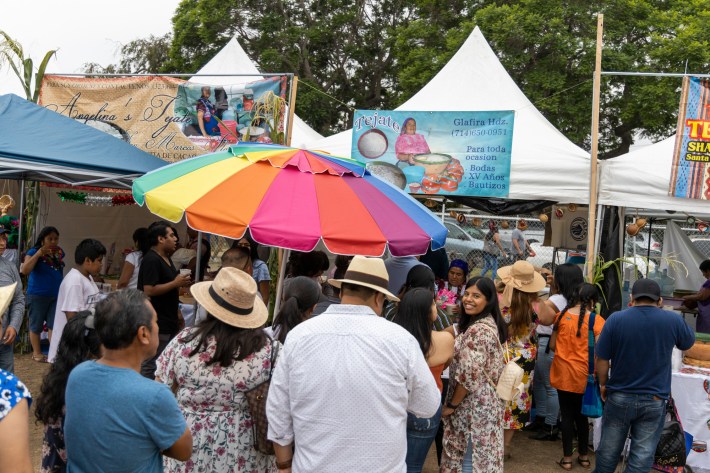
At the tejate festival, there were many folklórico dance groups.“El Grupo folklórico Guish-Bac" organized this event and representation of the traditions that make Oaxaca a favorite travel destination for many people. A calenda procession, led by La Banda Filarmonica Juvenil 7 Regiones, trailed more native dancers. Women danced with flower-adorned baskets on top of their heads, representing their pueblo-specific traditional outfits. CD 11 Councilmember Bonin walked with the mayordomos and the mayordoma (leader figures in Oaxacan communities) and the organizers, who committed the time and money to put on this special event that connects transnational communities and their traditions.
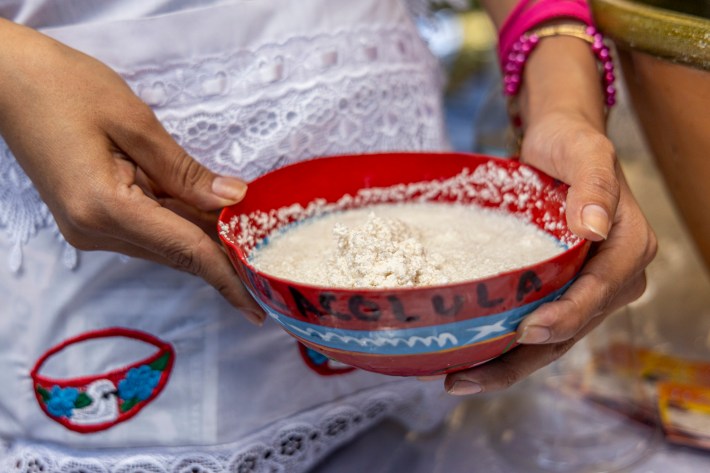
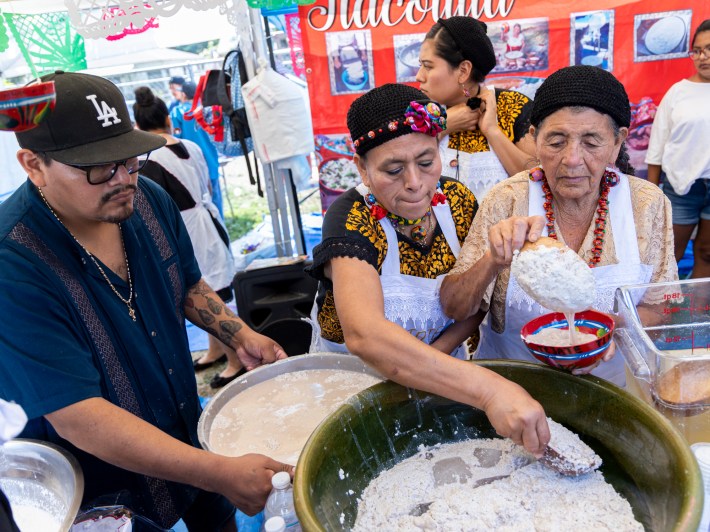
Tejate starts off as a paste made from toasted corn, cacao, mamey fruit seeds, and rosita de cacao (a spice made from dried flowers that is related to the cacao tree). It is hand-ground into a paste on a metate (mortar and pestle) then mixed with cold water into a refreshing and energizing drink with a thick, milky foam layer on top. That white foam occurs from the natural fats in the mamey seeds and cacao, resembling a dense whipped cream. It’s a labor-intensive process with a distinct taste that connects modern hybrid generations like my own to our ancestors.
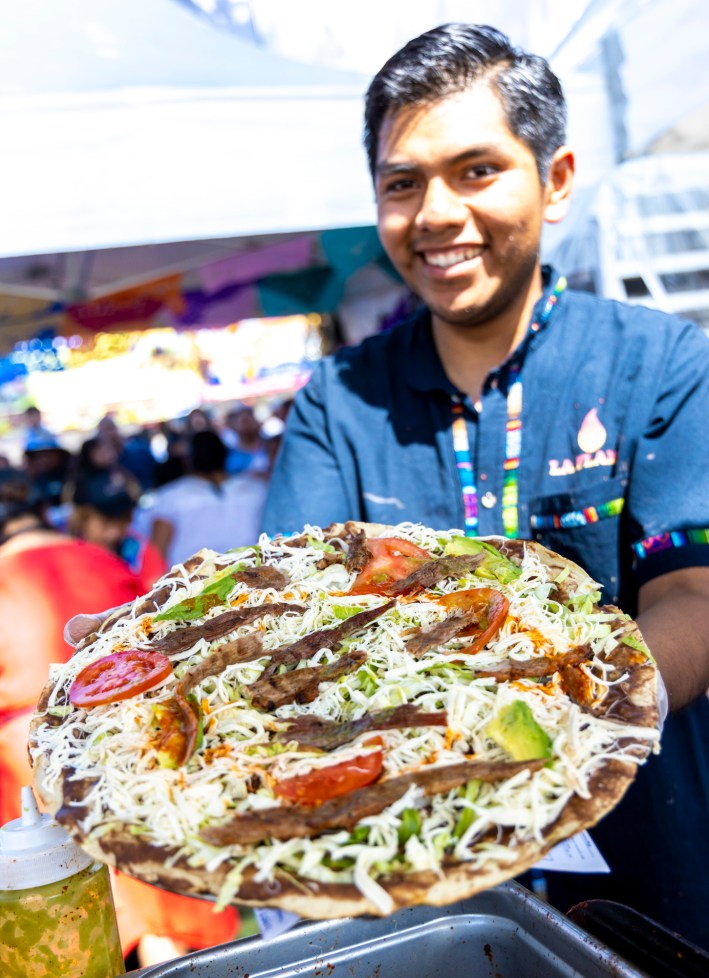
Tejate is still a daily drink in Oaxaca. It is usually served in colorful jicaras (dried-out gourds) that demand you to use both hands to cup it. It is a staple in the massive Sunday market of Tlacolula and throughout the other pueblos of the region. Younger generations like myself adorn themselves with jicaras earrings and jewelry. At the event, I proudly wore my jicara colorada earrings with red tassel earrings I bought in Oaxaca earlier this summer.
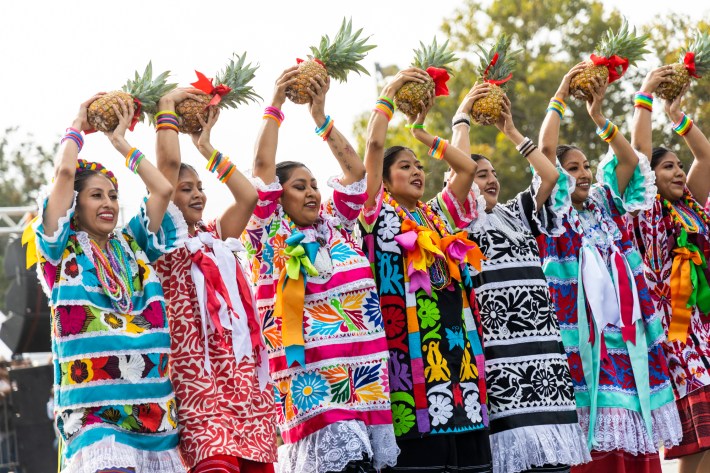
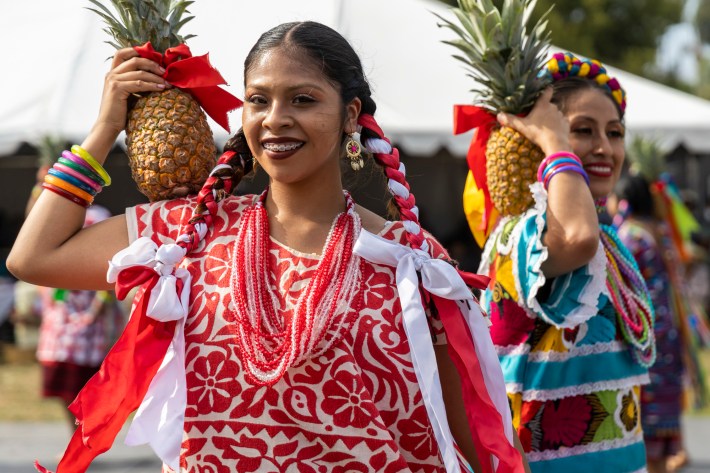
The Valle de Tlacolula is my family’s ancestral home. For those of us from Tlacolula, the sweet and nutty smell that accompanies Tejate is pure nostalgia. Growing up, my playset was a metate with the year of its creation, 2003, carved on the front side. Instead of plastic plates and pans, I played with natural jicaras coloradas and clay cazuelas that my family would bring me from Oaxaca as a child. The year 2003 was also the year they buried my paternal grandma. I’m a second-generation Mexican-American and like many other Oaxacan descended individuals, food and drink is a gateway to my roots.
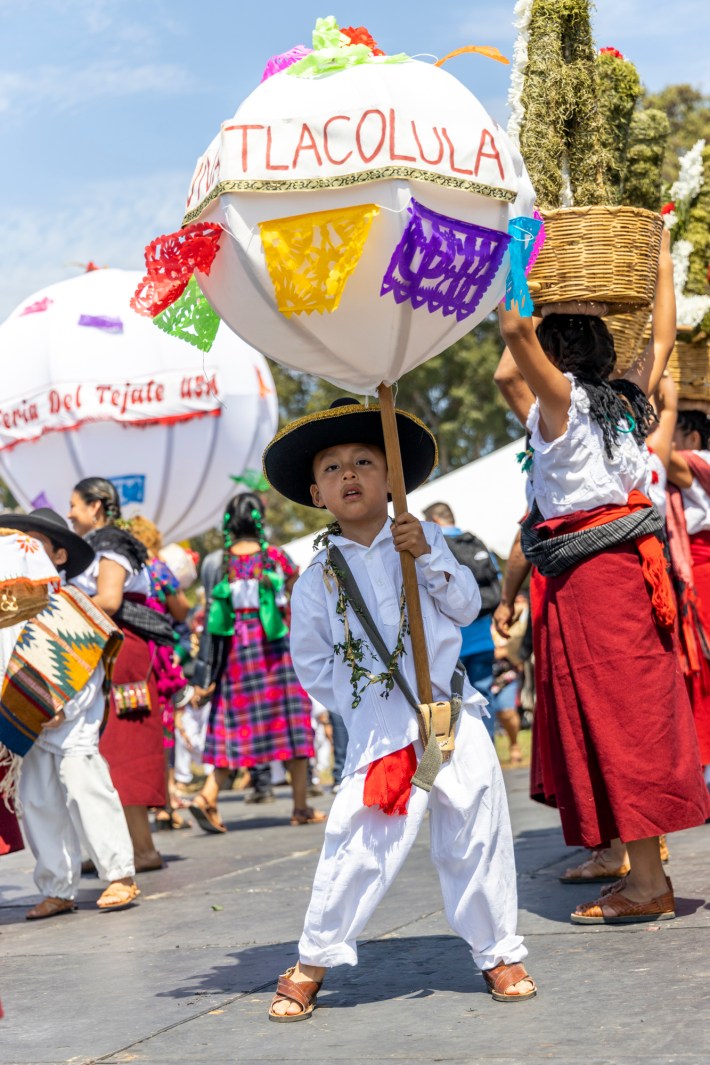
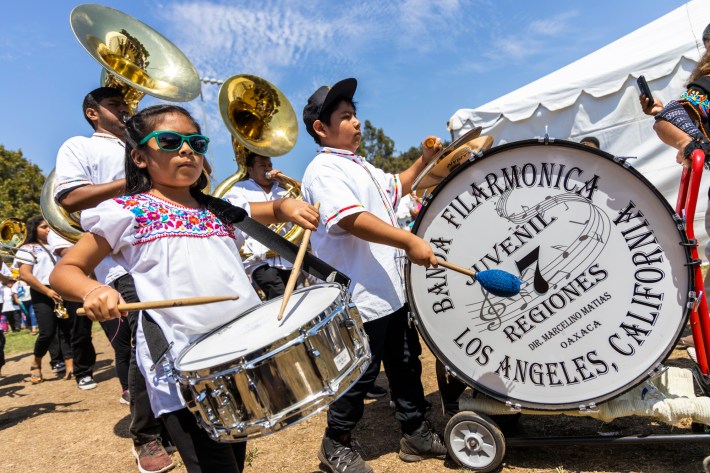
Growing up I was one of the only people in my extended tight-knight family and community who could travel to the motherland. As a result, I went often. I spent a formative year, kindergarten, and most summers in between my grandmother’s houses in Tlacolula. A city just outside Oaxaca city where Zapotec people migrated to from the nearby ruins of Yagul, where its caves known as Guilá Naquitz and Caballito Blanco hold some of the oldest traces of domesticated corn, squash, and beans have been found in the Americas.
While we may be divided by a border, the experiences and celebrations centered around this ancestral, refreshing beverage allow us to thrive.
From this valley filled with so much history, my Zapotec and Mixteco ancestors migrated north to west Los Angeles. It is not uncommon for entire pueblos to have settled in the west the L.A. neighborhoods of Culver City, Oaxaca-Monica (what my tia in Santa Monica calls it), and Venice, where I grew up, since the bracero program of the 1970s. My summer days were spent in L.A. at Stoner Park, watching my primos and brother's little league games known as the Stoner All-Stars, then as a skater. We always came to the annual La Feria de Tejate as a family but so many birthdays and family days were also spent in this community park.

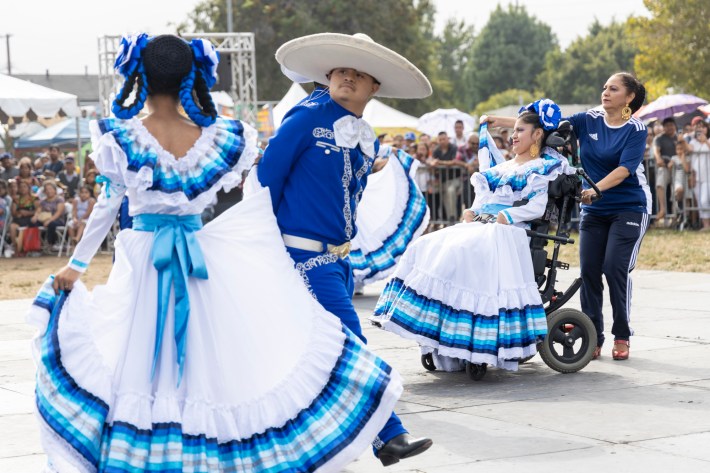
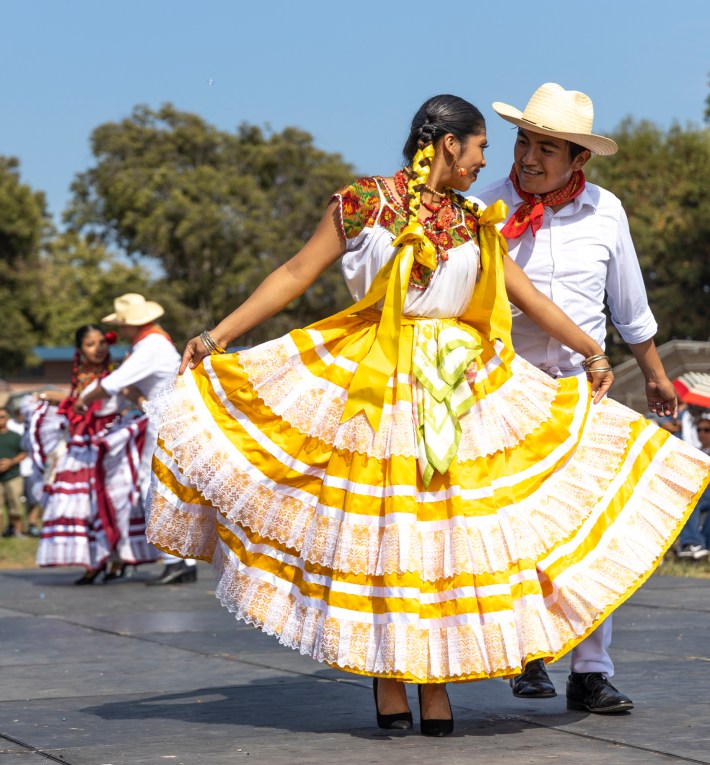
Tlacolula is known across Oaxaca for its Sunday market, the oldest continuously running open-air market that takes over the town. It has been going since before the conquest and it is a growing tourist attraction. The market, the food, the family, the community, the feeling is what we emulate in the states with festivals like these. Los Angeles is no Tlacolula but I find festivals like this Tejate-centered one building a bridge between these two cities.

At La Feria, I speak to Fatima Luis, a third-generation tejatera, and one of the four women in her family who have learned the skills needed for tejate. Doña Licha, her grandma, is the elder she learned her craft from. Fatima started to do it more when Doña Licha’s arthritis started affecting her. They’ve participated in this festival every single year since it started. They won once in the Tejate competition component that is hosted at La Feria, and have placed many times.
The title of 2019s “Master Tejatera” went to Glafira Hernandez, from San Bartolomé Quialana. She came out to the festival from Buena Park California. She and her family have also been participating in this feria and its contest most of its 12 years. Each one of the competing vendors receives a Certificate of Recognition from the city. While the event struggled with permits during its early years, it is now a valued part of the local community.
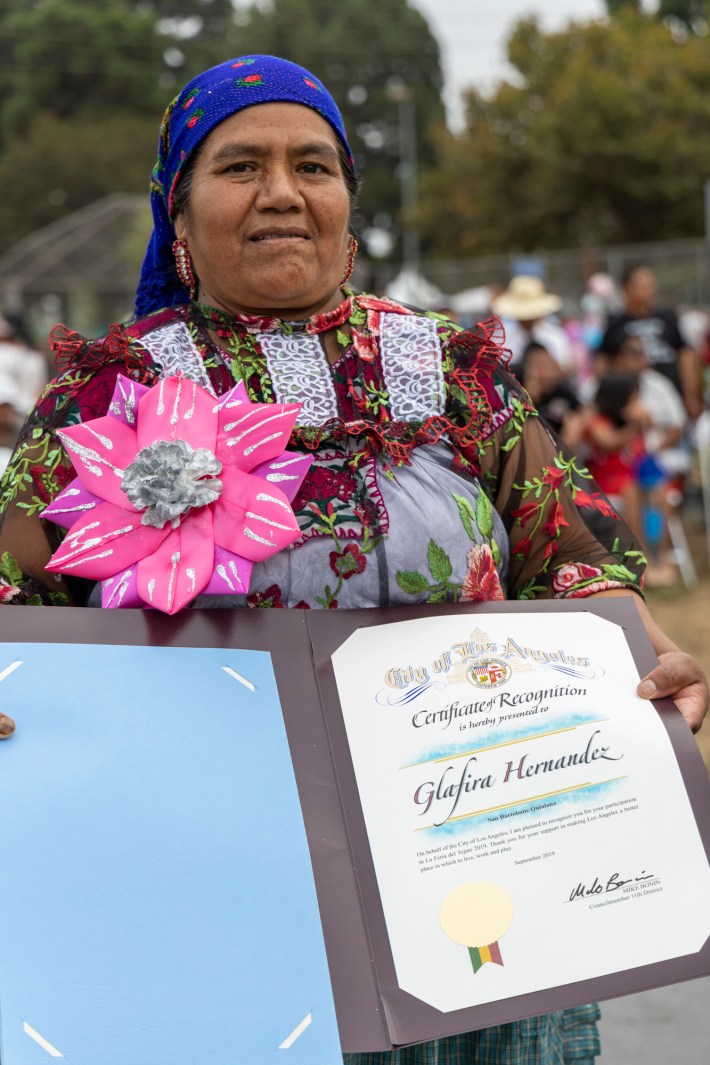
As the day went by and dozens of tejates were enjoyed, a youth philharmonic orchestra played “Que Lejos Estoy del Cielo,” a song that emotes the collective longing for a land some have never visited and many can’t. For the generations of families who participate in La feria del Tejate, it is a platform to honor our traditions. While we may be divided by a border, the experiences and celebrations centered around this ancestral, refreshing beverage allow us to thrive.
